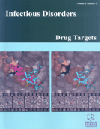
Full text loading...
We use cookies to track usage and preferences.I Understand
Non-coding RNAs (ncRNAs), specifically MicroRNAs or miRNAs, are now understood to be essential regulators in the complex field of gene expression. By selectively binding to certain mRNA targets, these tiny RNA molecules control the expression of genes, leading to mRNA degradation or translational repression. The discovery of miRNAs has significantly advanced biomedical research, particularly in elucidating the molecular mechanisms underlying various diseases and exploring innovative therapeutic approaches. Recent progress in miRNA research has provided insights into their biogenesis, functional roles, and potential clinical applications. Despite the absence of established methodologies for clinical implementation, miRNAs show great promise as diagnostic and therapeutic agents for a wide array of diseases. Their distinctive attributes, such as high specificity, sensitivity, and accessibility, position them as ideal candidates for biomarker development and targeted therapy. Achieving a comprehensive understanding of miRNA biology and functionality is crucial to fully harnessing their potential in medicine. Ongoing research efforts aim to unravel the intricate mechanisms of miRNA-mediated gene regulation and to develop novel approaches for utilizing miRNAs in disease diagnosis, prognosis, and treatment. This review provides a comprehensive analysis of current knowledge on miRNAs, focusing on their biogenesis, regulatory mechanisms, and potential clinical applications. By synthesizing existing evidence and highlighting key research findings, this review aims to inspire further exploration into the diverse roles of miRNAs in health and disease. Ultimately, this endeavour could result in the development of innovative miRNA-based diagnostic and therapeutic strategies.

Article metrics loading...

Full text loading...
References


Data & Media loading...

